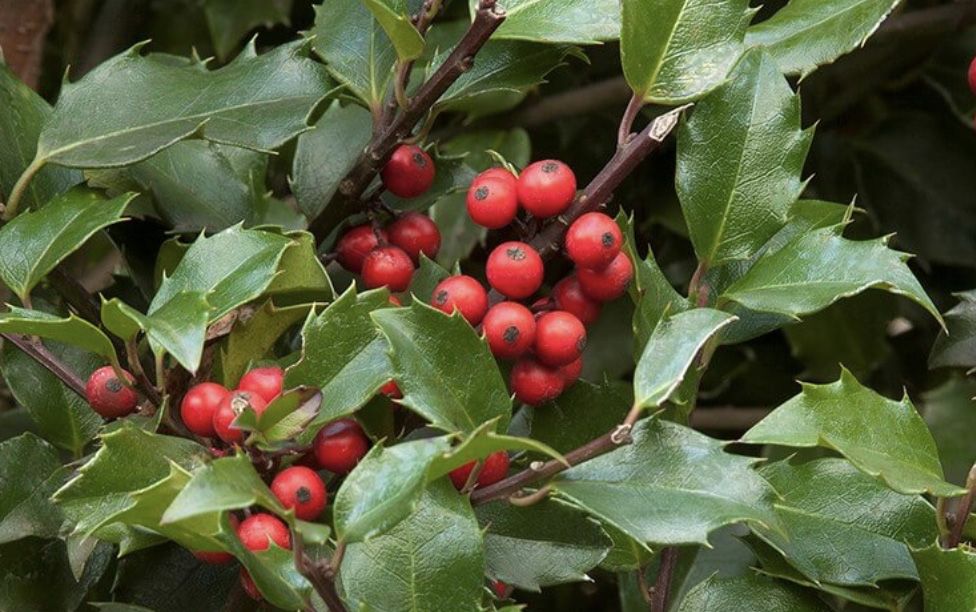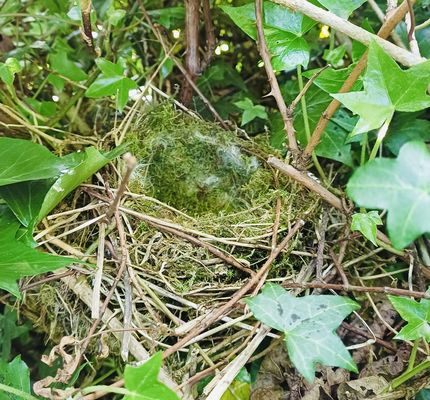OF all the jobs that Dúlra has turned his hand to over the years, there was one money-spinner that beat all the rest hands down. In fact, not a single potential customer refused to put their hands in their pockets for what was on offer – and things were just as tight on families all those decades ago as they are today.
So what was that essential, must-have item that the young Dúlra was selling around the doors, a thing so sought-after that a sale was always guaranteed? What could it be that put an immediate smile on every person's face and led them to raid the household kitty?
That thing, dear readers, was holly.
There is no house at Christmas that doesn’t look warmer and more festive for a spring of holly. Whatever about all those colourful paper decorations, a few branches of holly draped across the mantlepiece or hanging on the corners of picture frames breathes life and atmosphere into any festive living room.
There’s only one condition – they must have berries.
The leathery spiked holly leaves on their own don’t mean anything without the contrast of that burst of blood-red colour. Even today, if someone rapped your door offering a half-dozen springs of holly with ruby-red berries for a couple of quid, you’d be searching down the back of the sofa.
Legend has it that the thorny holly was the crown on Christ’s head, the berries coloured by his blood.
Only half of holly trees – the females – can have berries, and many of these are barren. This week the famous Squinter went out, clippers in hand, to try to find some in Crumlin Glen, and came back empty-handed. He did find one female tree, but the berries were so sparse and the tree so forlorn that he couldn’t bring himself to cut any.
In Dúlra’s experience, you need to know which trees produce berries. Some, it seems, just have a knack and you can trim them every year.
Dúlra used to collect those berry-packed Christmas branches on the lower slopes of Black Mountain, where nature expert Steek Megaw always knew where to find the best.
A few years back Dúlra returned with Steek and he took us through thicket after thicket straight to the Black Mountain queen of the hollies. All these trees are native Irish – on our hills since the ice melted 10,000 years ago - and there were so many berries on it that it seemed laden down with their weight.
We snipped all we could on the lower branches and stuffed the sprigs into two bin bags, before heading home carrying them over our shoulders like Santa himself.
We could have made another killing selling them around the doors, but those days are long gone - at least for us. The Black Mountain holly was handed out free to delighted friends and neighbours.
The cuileann is one of Ireland’s best trees – and that’s just not Dúlra’s opinion, but that of the old Brehon lawyers of Ireland, who, incredibly, rated it the third most valuable of the 28 listed.
It makes a great impenetrable protective hedge in fields and its wood can be delicately carved. Dúlra used to have a holly walking stick which he loved and it always surprised the blackthorn-using majority.
The holly’s job in the past was to build up the forest floor while the grander trees reached for the sky. That meant it was a godsend to birds – they love to hide there because birds of prey avoid the prickly leaves.
And those red berries we so value are also devoured by thrushes. It takes those berries so long to ripen that they aren’t perfect until after Christmas, meaning they can be a lifesaver.
Dúlra doesn’t need to go up the Black Mountain any more, because, magically, his next-door neighbour has a beautiful, tall female holly which is blessed with an abundance of berries every year.
There’s a sprig on its way to Squinter’s house right now – just in time for Christmas.
• The explosion of raptors across the Belfast Hills is extraordinary. Dozens of kestrels and buzzards now patrol the skies and the fields from Ligoniel to Dundrod to Hannahstown. Even motorists passing through will inevitably see them.
After years of persecution, it seems these raptors are finally getting a break. The kestrels have found safe havens for nesting in local quarries – watched over by a new generation of environmentalists – and are picking off meadow pipits and mice, even on our frost-covered hilltops. The giant buzzards have filled the vacuum left by our now-extinct eagles, dining on our crows and magpies, hopefully!
Every time Dúlra spots a buzzard, he stops and focuses the binoculars – not just to admire them - they’re that common now he almost takes them for granted - but in the hope it turns out to be a hen harrier. Unlike buzzards, this ground-nesting bird of prey is close to extinction in Ireland, but have been spotted on the Belfast Hills this year.
We’ve managed to coax kestrels and buzzards back into our skies – doing the same for the hen harrier would be a serious challenge, requiring the zoning off of swathes of land from walkers and farmers. As the saying goes, nothing good comes without sacrifice. Are we really up for it?
• If you’ve seen or photographed anything interesting, or have any nature questions, you can text Dúlra on 07801 414804.









